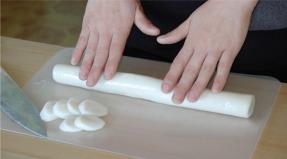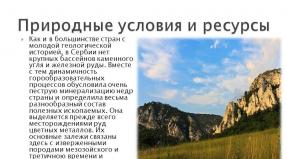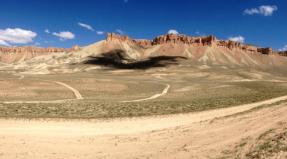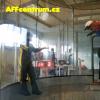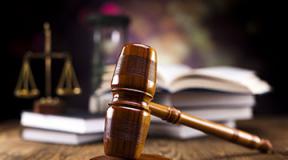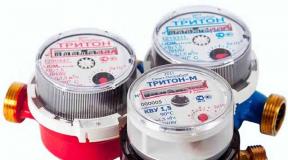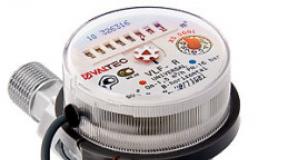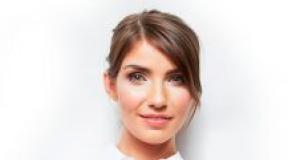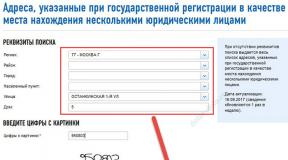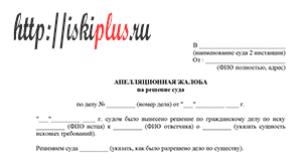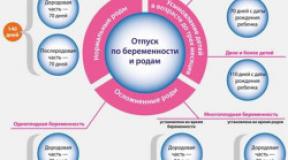How to build leg muscles. So how to pump up the legs and buttocks of a girl at home? Step up with and without dumbbells
The legs are the largest muscle group in the human body and it is not surprising that their development requires a serious approach! Learn how to build leg muscles! The best exercises, workouts and recommendations!
If you have never wondered “how to pump up your legs”, then you are the wrong bodybuilder. And here's why: firstly, during training, you can’t constantly pump only and, the upper body becomes pumped, while the lower one lacks strength and muscle mass. An imbalance occurs in the figure, which is fundamentally wrong for. Secondly, even if you have been training for a long time, from time to time you should stop yourself and refine your leg pumping technique, look for new exercises, build new workouts to prevent muscle adaptation. Even girls should think about this issue, because leg workouts are the most exhausting and energy-intensive, which means they are great for weight loss training.
In addition, the fair sex should strive to pump up beautiful legs, because a pair of slender graceful legs is the dream of any girl and the delight of every man! Therefore, if you are the right bodybuilder or fitness girl, if you want to get a relief or build muscle mass, there is only one answer - swing your legs!
Training for experienced athletes
* - The service is in beta testing
All you can think about is how to build beautiful legs with impressive muscles? Agree, skinny legs don't impress anyone! powerful leg muscles
The general plan of any visitor to the gym should be the development of a program that will develop the entire muscle mass in a balanced way. This means that regular and alternating workouts are necessary for each muscle group. And for optimal results, each muscle group must work together with each other.
Whether you're looking to gain mass or want to add strength and boost your metabolism, you should definitely be doing exercises that will help you build your legs.
The legs, in particular the muscles of the upper thighs, are the largest muscle groups in the entire body. Regardless of your goals, they are the source of strength. That is why exercises for pumping up the muscles of the legs should be included in any workout. In many strength exercises you work the muscles of the shoulders, chest and arms, but keep in mind that the legs are a source of strength and energy in any load. Strong legs will allow you to:
- Lift heavier weights
- Create a foundation for the growth of other muscle groups
- form a powerful source of lean muscle mass, which will speed up the metabolism
Anatomical features of pumping up the muscles of the legs
Legs are one of the largest and most complex parts of the body. The study of their anatomy can best be broken down into two main groups: the quadriceps and the hamstrings. Although the buttocks are not considered part of the legs, the article would not be complete without them!
Quadriceps femoris

The best exercises to build legs
Do you want to know how to pump up your legs? Despite the fact that the legs are involved in the work of almost all strength exercises, you should not rely only on this passive inclusion. Unlike targeted training, such a load is ineffective for leg muscles. As with any other muscle group, use the multi-component complex and to comprehensively affect the legs. The proposed 5 exercises for the development of quadriceps guarantee a full study of not only the quadriceps muscles, but the entire leg. You will see how the tone of the body as a whole will increase, and you will be pleasantly surprised by the size of your pumped up legs.
Sprint
You don't have to run marathons, you can run almost anywhere there is enough space. The great advantage of sprints is that it is both aerobic and anaerobic. Not only the legs will work, but also the cardiovascular system, training yours.
Although such training is quite simple, it has its own rules. Avoid running on a hard surface, choose a softer option where you have to make an effort - forest, grass, paths.
When you run, use your arms and raise your knees high so that your legs really work, then the quadriceps will be fully involved. You will get the maximum return and inflated leg muscles. If you want to change your pace but don't have enough space (especially in the city), try running up the stairs.
Barbell Bench Steps
One of the best ways to train your body is with functional exercises. They mimic the movements you use in your daily life. One of the best quadriceps exercises. It is very similar to lunges and at the same time imitates movements to stabilize the body.
Place a barbell (or dumbbells, but this will greatly reduce the load) on your shoulders, as in squats, and step onto a small box or bench. Make sure you hold your weight as you step up. To lift the body, load the working leg. Pull your back leg forward and raise your knee as high as you can. Step the same foot back down, while the front leg remains in tension.

Forward lunges with a barbell
This exercise is similar to the previous one - stepping onto the bench, and is also extremely effective for pumping up the legs. It is not necessary to work with a barbell, you can do lunges with dumbbells in your hands or just with your own weight, this is a matter of taste and the desired intensity.
Your goal is to perform a set of regular lunges with a barbell on your shoulders or with dumbbells in your hands. In the lunge position, one foot is in front, her knee does not go beyond her toes. The knees of both legs are bent at a right angle. The correct option is that the thighs are parallel to the floor, the knee of the back leg does not touch the floor.

Barbell Squat
The squat is considered the king of leg exercises and is often at the center of a workout for building strong and beautiful legs. Barbell squats activate all muscle groups. This basic exercise requires complete stabilization of the body, making it one of the most difficult to perform. The extra weight puts a lot of strain on the muscles, leading to growth and strength. The weighted squat requires strong shoulders, as it rests either on the shoulders below the neck or on the upper chest.
To find out what other exercises will help you pump up the quadriceps, go to the website page.
We swing our legs
Basic set
Extended set
Basic set
Basic set
Extended set

Dymatize | Dymatize BCAA 2200 ?
4 tablets between meals.
The essential branched chain amino acids in Dymatize BCAA provide muscle cells with essential building blocks. The use of this supplement will help not only maintain and increase muscle tissue in the body, but also optimize the passage of a number of other metabolic processes.

Dymatize | L-carnitine xtreme ?
1-2 capsules daily, preferably with meals.
The fat burner of the world famous manufacturer Dymatize L-carnitine xtreme 60ct is a unique product, its main purpose is to dispose of subcutaneous fat as quickly as possible.

Dymatize | ISO 100?
If necessary, you can add one serving before bedtime.
Dymatize Iso 100 728g - a protein mixture from the American manufacturer Dymatize, it contains 90% milk protein and whey isolate, delivers slow and fast proteins to the athlete's body.

TwinLab | Men's Ultra Multi Daily ?
1 capsule.
Designed specifically for men, Twinlab Men's Ultra Multi Daily vitamin and mineral complex contains the necessary set of nutrients and special matrices to improve prostate function, as well as antioxidants and tonic components.

Universal Nutrition | Ultra Whey Pro
1-2 measuring spoons are mixed with 200-250 grams of water or any other liquid.
Master of all site and fitness trainer | more >>
Genus. 1984 Trained since 1999. Trained since 2007. CCM in powerlifting. Champion of Russia and the South of Russia according to AWPC. Champion of the Krasnodar Territory according to IPF. 1st category in weightlifting. 2-time winner of the championship of the Krasnodar Territory in t / a. Author of over 700 articles on fitness and amateur athleticism. Author and co-author of 5 books.
Place in : out of competition ()
The date: 2012-01-07 Views: 47 924 Grade: 5.0
 By legs, I mean the muscles of the thigh and lower leg. And although leg training is almost always inextricably linked with buttock training, I wrote about the buttocks. So, let's get started: how to pump up your legs? The most important exercise is this. I think you all know this exercise well, so I want to talk about its varieties. and . I do not advise doing such squats for those who came to the gym for the first time, and for those who have not yet mastered the technique of classic squats. In addition, this option requires good flexibility in the hip joints. But its plus is that it allows you to better work out the inside of the thigh. Squats with incomplete leg extension. A very hard exercise. Even small weights instantly load your hips to the limit. After all, if you do not get up to the end, then the front surface of the thigh is deprived of the opportunity to rest and is always in tension. Performing this exercise after the main leg exercises can serve as an additional impetus for the growth of the volume of your hips. . Due to the fact that there is almost no back tilt, more load falls on the front surface of the thigh, in particular, on the quadriceps muscle. . Performed both without weight (for starters), and with a barbell on the shoulders. The technique should be such that when viewed from the side, then at the bottom point the angles should be like in a normal squat. The leg set aside is always straight. And so you roll from foot to foot. This exercise works great on the back of the thigh. can be safely considered a basic exercise for leg muscles among simulators. The principle of the leg muscles is akin to barbell squats, with one significant difference. There is no load on the back. Therefore, this exercise is especially useful for those who cannot squat with a barbell due to various injuries and diseases of the spine. . This exercise, like squats, loads your back. But a little smaller due to the fact that there is a back at the back. The further you put your feet forward, the more load will fall on the front of the thigh. Now a few words about the shin. All exercises for the lower leg can be divided into two categories. These are standing (or) and sitting (or). In the standing version, it is the calf muscle (biceps calf muscle) that will work for you. In the sitting version, it is mainly the soleus muscle, which is located under the calf. Hence the conclusion that if you want to pump up the lower leg, then you need to perform the exercises both sitting and standing. Let's say one workout is sitting, the other is standing. Moreover, the calf muscles are very hardy muscles, and in order to make them grow, it is necessary to perform many sets of 20-30 lifts per set. There are still a great many exercises for the muscles of the legs (especially on simulators). In this article, I focused on the main ones. Now I want to say a few words about how to combine all this in training. A standard program for a comprehensive study of the legs will be considered. Legs can be pumped 2 times a week. It is better to start training on legs with squats. It can be either a classic version or various variations given above. Then you can shake your feet. After that, you can do a couple of exercises on the simulators for any surface of the thigh (at your discretion). You can finish your workout with a calf exercise. If the first workout was on Monday, then the next one on your feet can be done on Friday. Squats in the HACK simulator and rolls to the side - this is quite enough. Shank - optional. So Monday is the main workout. And on Friday - additional. Another option is to use different supersets for the same muscle. Let's say, at first - one set of squats with a barbell, then immediately -. Rolls to the side, then immediately -. Well, and so on. And so 3 - 4 approaches. But this one is for the more experienced. However, this method can give a powerful impetus to the growth of muscle volume. It's all for today. Subscribe to new articles, and good luck!
By legs, I mean the muscles of the thigh and lower leg. And although leg training is almost always inextricably linked with buttock training, I wrote about the buttocks. So, let's get started: how to pump up your legs? The most important exercise is this. I think you all know this exercise well, so I want to talk about its varieties. and . I do not advise doing such squats for those who came to the gym for the first time, and for those who have not yet mastered the technique of classic squats. In addition, this option requires good flexibility in the hip joints. But its plus is that it allows you to better work out the inside of the thigh. Squats with incomplete leg extension. A very hard exercise. Even small weights instantly load your hips to the limit. After all, if you do not get up to the end, then the front surface of the thigh is deprived of the opportunity to rest and is always in tension. Performing this exercise after the main leg exercises can serve as an additional impetus for the growth of the volume of your hips. . Due to the fact that there is almost no back tilt, more load falls on the front surface of the thigh, in particular, on the quadriceps muscle. . Performed both without weight (for starters), and with a barbell on the shoulders. The technique should be such that when viewed from the side, then at the bottom point the angles should be like in a normal squat. The leg set aside is always straight. And so you roll from foot to foot. This exercise works great on the back of the thigh. can be safely considered a basic exercise for leg muscles among simulators. The principle of the leg muscles is akin to barbell squats, with one significant difference. There is no load on the back. Therefore, this exercise is especially useful for those who cannot squat with a barbell due to various injuries and diseases of the spine. . This exercise, like squats, loads your back. But a little smaller due to the fact that there is a back at the back. The further you put your feet forward, the more load will fall on the front of the thigh. Now a few words about the shin. All exercises for the lower leg can be divided into two categories. These are standing (or) and sitting (or). In the standing version, it is the calf muscle (biceps calf muscle) that will work for you. In the sitting version, it is mainly the soleus muscle, which is located under the calf. Hence the conclusion that if you want to pump up the lower leg, then you need to perform the exercises both sitting and standing. Let's say one workout is sitting, the other is standing. Moreover, the calf muscles are very hardy muscles, and in order to make them grow, it is necessary to perform many sets of 20-30 lifts per set. There are still a great many exercises for the muscles of the legs (especially on simulators). In this article, I focused on the main ones. Now I want to say a few words about how to combine all this in training. A standard program for a comprehensive study of the legs will be considered. Legs can be pumped 2 times a week. It is better to start training on legs with squats. It can be either a classic version or various variations given above. Then you can shake your feet. After that, you can do a couple of exercises on the simulators for any surface of the thigh (at your discretion). You can finish your workout with a calf exercise. If the first workout was on Monday, then the next one on your feet can be done on Friday. Squats in the HACK simulator and rolls to the side - this is quite enough. Shank - optional. So Monday is the main workout. And on Friday - additional. Another option is to use different supersets for the same muscle. Let's say, at first - one set of squats with a barbell, then immediately -. Rolls to the side, then immediately -. Well, and so on. And so 3 - 4 approaches. But this one is for the more experienced. However, this method can give a powerful impetus to the growth of muscle volume. It's all for today. Subscribe to new articles, and good luck!
Expert opinion
Obukhov Sergey - Candidate Master of Sports in bench press, folk press, deadlift and author of the site strengthichest.rf
I agree with the author's article, but I would like to personally share my experience and observations. As a coach, I tested this not only on myself, but also on my students. We train legs hard, but once every 2 weeks. The legs are the largest muscle group and it takes a very long time to recover and even more so to supercompensate. While the recovery process of myofibrils takes a long time, other processes, such as replenishment of glycogen, have long since ended. Therefore, in the 1st week we train heavy legs in a small range of repetitions of 6-8, and the next week we do an easy leg workout with 50% of the working weight for 10 repetitions. So we catch supercompensation in all directions. Periodization is a very powerful thing and you can’t constantly plow into failure otherwise you will quickly get overtrained. My students for the first year of training according to this scheme reached 100 kg of working weight.
By the way, you can order
Frankly speaking, pumping up huge leg muscles is not the goal of many gym goers, because most dream of huge arms and impressive pectoral muscles, like iron Arnie. However, the Inflated top will look ridiculous and ridiculous against the background of skinny legs. In addition, the legs are the largest and strongest muscle group, the development of which contributes to an increase in the strength and volume of other muscles. And this is not all the benefits of building large and powerful leg muscles. Today we'll talk about how to pump up legs, what are the best and what leg training in the gym and at home should look like.
How to build legs: some nuances of leg training
As mentioned above, the legs are the largest and strongest muscle group. Therefore, training legs will be significantly different from training biceps, for example. First, it is a large amount of strength work. To work out such a large muscle mass, you need a large training volume, that is, performing a large number of sets with free weights. Secondly, it is a great intensity. In order to make your leg muscles grow, you need to use heavy weights and aim to gradually increase them, as the muscles quickly adapt and growth stops.
Leg muscles respond best to medium to high reps. If your goal is to pump up the muscles of the legs, I advise you to perform at least 8 repetitions in each approach. The optimal rep range for leg muscles is 10-15 reps per set. The number of approaches depends on the fitness of the athlete. The longer the training experience, the more working approaches will be needed to work out the muscles of the legs.
Best Leg Exercises
What exercises for the legs should be performed, and which ones should be avoided? Let's look at the best exercises for the muscles of the legs and buttocks.
As you may have guessed, the best leg exercise is the squat. It is impossible to build huge and powerful leg muscles without barbell squats. This exercise number 1 is not only for building leg muscles, but also for increasing muscle mass and strength of the whole body, since 2/3 of the muscles of the whole body are included in the work during squats. That is why they have such a powerful anabolic effect.
The second leg exercise is the deadlift with a barbell on straight legs. This is a powerful basic exercise that is designed to work out the muscles of the back of the thigh. In principle, to effectively build muscle mass in the legs, it is enough to perform only these two super exercises. I usually do this. Sometimes I include in the training program for the legs and exercises for the calves.
Now let's look at what exercises are best not to perform in leg training because of their unjustified injury risk and low efficiency. So, I do not recommend doing Zercher barbell squats, Smith machine squats, and machine leg extensions.
Basic set of exercises for the legs in the gym
- Barbell Squats 2-3 warm-up + 4-5 working sets of 8-12 reps
- Deadlift on straight legs 1-2 sizes. + 4-5x8-10
Extended set of exercises for the legs in the gym
- Squats with a barbell 2-3 sizes. + 4-5x10-15
- Deadlift on straight legs 1-2 sizes. + 4x10-12
- Leg press in the simulator 1-2 sizes. + 4x10-12
- Bending the legs in the simulator 1-2 sizes. + 3-4x8-10
- Rise on socks 4-5х20-25
How to pump up legs at home
How to pump up your legs at home if there is no way to train in the gym? Leg training at home is characterized mainly by the absence or small selection of sports equipment, which greatly complicates the task. To be frank, at home you won't achieve the results you would at the gym unless you have a barbell at home with a decent set of plates and squat racks, of course.
However, as they say: "Better a tit in the hand than a crane in the sky." Even with a modest inventory, you can get a good leg pump at home if you want. All you need is at least some sports equipment (kettlebells or dumbbells) and a set of leg exercises at home, provided below.
The initial set of exercises for the legs at home
- Weighted squats (dumbbells, kettlebell) 5x15-20
- Lunges forward with weights in the hands 3x12-15
- Deadlift standing on straight legs 3x12-15
- Lifting on socks with weights in the hands 4x20
Advanced set of leg exercises at home
- Squats on one leg 3-4x12-15
- Deadlift standing on straight legs 4x12-15
- Weighted squats 4x15-20
- Lunges forward with weights 3-4x12-15 on each leg
- Lifting on the toe with weights in the hand 4-5x20-25.
Home workouts are just as effective as workouts in the gym. To pump up a girl's legs at home, it is not necessary to have exercise equipment, a stepper, or use a barbell at your disposal. Leg training at home can be performed using only the gravity of your body. Some exercises may require the use of a chair. The main thing is to have good motivation, and also to know which movements are best worked out by the gluteal, calf, inner and back muscles of the thighs, as well as quadriceps.

Well-developed legs aren't just for runners and athletes. Strong lower limbs make a person much more enduring in everyday life, and also give the figure an athletically toned harmony. If you devote enough time to training your legs, after a short period of time you can notice how much easier it became to climb the stairs. Don't worry about your fitness level. Lower body pumping exercises are not difficult and can be performed even by those who have not previously devoted much time to sports and training.
Most of the movements do not require the use of weights and weighting, but give a good load thanks to your own body. If we talk about home workouts, then there are many exercises that do not require the purchase of any sports equipment or equipment. They allow you to increase endurance when walking, and, consequently, get tired much less and achieve more in life. Another advantage is the ability to prepare yourself for serious loads both in the sports field and in the performance of ordinary everyday tasks.
Pumping up your legs at home is not only a feasible task, but also incredibly useful. Exercises that load the lower limbs bring the muscles involved in everyday life into a good tone. Squats, which imitate the movement made when a person sits on a chair, help not only strengthen the muscles of the legs, but also improve posture. Squat lifts require heel push, core lock. In other words, a person develops useful habits that are applicable not only during the training, but also in everyday life.
Beautiful posture, proper fit, lack of fatigue when walking - these are just some of the positive benefits of leg training. Simple exercises that do not require good physical fitness will be an excellent base for moving on to more complex training with the addition of weights. Well-developed leg muscles are of paramount importance for many complex weight exercises. Another advantage of movements without the use of additional sports equipment is that they allow you to hone the execution technique to automatism, but at the same time pump up the lower limbs.
If lunges and squats have never been performed before, then it is strongly not recommended to immediately do such exercises with weights. This will lead to difficulties with mastering the technique, since most of the effort will be directed to holding the weights. There is little benefit from such training. Home basic training for pumping up the legs helps to hone literally every movement in a familiar environment, become the owner of strong and developed lower limbs, and prepare for more intense classes. The last point is a nice bonus for those who have seriously decided to make their figure more athletically developed and toned.
The best leg workout exercises at home
There are many effective and powerful movements, the technique of which is quite simple to master. They do not require serious physical training or the use of special sports equipment and simulators. For girls who do not want to stop there, this complex will help them become stronger and more resilient in order to move on to a new, more complex training using weights.

Performance:
- Get straight. Legs are spaced shoulder-width apart. Transferring the weight of your own body to the heels, the socks are slightly parted to the sides.
- The body is slightly tilted forward. The pelvis is pulled back and lowered into a squat position. The hips should be parallel to the floor when bending the knees.
- To return to the starting position, they push off with their heels from the floor surface and straighten the body.
- When lifting, make sure that the core muscles are tense and the buttocks are clamped.

Performance:
- Take a starting position, standing straight, when the legs are set approximately shoulder-width apart.
- Step left or right foot back, putting it on the toe. Both knees are bent at a right angle.
- They push off with the heel of a stable leg, that is, the one that is not pulled back, and return to the initial stance.
- Rising, the knee of the back leg pulls the knee to the chest.
Repeat all movements on the second leg.

Performance:
- They take the starting position for the squat, but the socks are spread apart, and the hands are placed either on the hips or kept at chest level (in front of you).
- Squat until thighs and floor are parallel to each other.
- They remain in a squat, come off with both heels from the floor surface and linger in this position for a couple of seconds.
- Drop heels.

Performance:
- In a standing position, spread the feet slightly wider than the hip.
- Leaning forward, the pelvis is taken a little back, lowered in a squat, bending the knees until a parallel is formed between the hips and the floor.
- They jump up, straightening their legs. To make the highest possible jump, the arms are lowered along the body. The back is kept straight and the chest slightly raised.
- They land on their knees and immediately do another squat.

Performance:
- Take a chair or box. Become facing the selected subject. Hands are held along the body or on the belt.
- Touch the bench (box) with the toe of the left foot, and then the right. The change should take place alternately and fairly quickly.
- Make sure that the chest rises and the back remains straight.

Performance:
- They stand up straight. The feet are spaced hip-width apart.
- They step wide to the right side, bending the knee and pulling back the pelvis. The left leg is kept straight.
- When doing a side lunge, make sure that the core muscles are clamped, and the chest remains raised.
Repeat on the left leg.

Performance:
- In the starting position, the feet are placed directly on the width of the hips.
- Raise the knee to the level of the thigh. Hands are held either behind the head or on the belt. You need to choose the option that allows you to better maintain balance.
- Toes point forward. The muscles of the cortex are tense. The heel of the standing leg is torn off the floor, balancing only on the toe. Trying to get as high as possible.
- Remain in the accepted position for three seconds and lower the raised heel to the floor.
Repeat the same procedure on the other side.

Performance:
- Standing, place the feet at the level of the hips.
- They step with the right foot back so that it is behind the left foot, that is, diagonally, bending the knees and lowering into a lunge.
- Push off with the heel of the right foot and pull up. Return to starting position.
Repeat similar movements, but on the left leg.

Performance:
- They stand up straight. The feet are brought together.
- The left leg is torn off a couple of centimeters and pulled forward, and the toe is pulled towards itself.
- They bend the right knee, bend the body forward and squat, while raising the left leg to the level of the hips. Arms extended forward to maintain balance.
- A more complicated variation of the exercise involves bending the knee to a right angle. Doing it the first time is not always possible.
- They push off with the right heel, unbend the leg and return to the starting position.
Repeat the exercise on the other leg.

Lie down on the side. Straight legs are placed one on top of the other. The body rests on the forearm or is completely lowered. Exercise is best done on a mat.
Performance:
- The top leg is slowly lifted up.
- The movement should be carried out by the force of the gluteal and femoral muscles, and not by the lower back.
- Return to starting position.
The movement is repeated on the other leg.

Performance:
- Lie down on the side. The legs are stacked one on top of the other. The body is either on the floor or rests on the forearm.
- The leg lying on top is bent at the knee and crossed in front of the lower leg. The foot of the forward leg should be at the level of the lower knee.
- Raise the bottom leg. Constantly monitor the safety of the immobility of the body during the entire exercise.
- Lower the leg.
Repeat the same procedure, but on the other side.

Performance:
- Lie down on your back. The legs are bent at the knee. Feet on the floor.
- The right leg, straightening, is lifted up. The thighs are parallel to each other. The sock reaches for the ceiling.
- They push off the floor with the heel, lifting the hips with a contraction of the buttocks. It is necessary to ensure that the shoulders and knee form an even diagonal.
- Maintain the adopted position for one or two seconds and lower.
Repeat the movement on the second leg.

Performance:
- Lie on your back, bend your knees, feet pressed to the floor. The right leg is lifted up, connecting the hips together, and straightened, shadows towards the ceiling.
- Lower the right leg through the side to the right. Try to get it as low as possible. At the same time, the hips should remain motionless, and the lower back should be pressed to the floor.
- The leg is returned to its original position.
Repeat the same procedure for the other leg.

The above program is not the only one. Another set of ten exercises allows you to diversify home workouts.
Instructions for the implementation of the complex
Start training with a warm-up. This is true for those who work out in the gym, and for girls who prefer home workouts. Before each lesson, the muscles and joints must be well warmed up, which has a positive effect on the classes, and protects against injuries.
After warming up, proceed to the exercises:
- "Run" with knees up for 60 seconds. Try to raise your knees to waist level, and then slowly lower to your toes.
- Cross lunges are done for 30 and 30 seconds. The weight is transferred to the right foot, take a wide step with the left foot back and put behind the right foot. Bend the knee so that the right thigh is parallel to the floor and return to the starting position. The toes should point in the same direction as the knees.
- Lateral leg raises do half a minute and another half a minute. They lie on their side, put the upper leg forward so that it crosses the lower one. The toes of the lower leg pull towards themselves, lower and raise the leg for 30 seconds, and then change sides.
- Jack squats do 45 seconds. The feet are separated, the knees are bent, the pelvis is laid back. Heels push off the floor, jump and return to the starting position.
- Bear squats are also performed in sets of 45 seconds.. They get on all fours, straighten their legs, raise the pelvis and return to their original position.
- Split squats (Bulgarian). Do 30 seconds on each side. Use either a bench or a step platform. The projectile is placed behind. They put their foot on the bench, bend the knee and lower the pelvis until a parallel is formed between the floor and the left thigh. Return to the starting position and repeat on the other leg.
- skaters. Do 45 seconds. They lean forward, but do not bend in the back, taking the left foot back, and the left hand forward. Jump to the left, bringing the right hand forward, taking the right leg back.
- Plie squat with toe raises. Completed within 45 seconds. The feet are separated as wide as possible. Socks look to the sides. The thighs are parallel to the floor. The heels are torn off the floor, pinching the calf muscles. They fall on the foot and rise again.
- . Do 30 seconds on each side. They lie down. stretching the arms along the body. The knees are bent, the feet are pressed to the floor. Raise one leg and pull the pelvis up as far as possible. They go down and change legs.
- Wall squat. Do it within 45 seconds. The back is pressed against the wall. The knees are bent. The adopted position is held for exactly 45 seconds.
Important! Each exercise is done three times, with a pause of a minute between sets.
Nothing transforms the physique like well-developed legs. In this article, you will learn about the best leg exercises.
If you regularly go to the gym, but at the same time neglect leg exercises, then your body will look like this ...
I perfectly understand your reluctance to train legs.
I confess that I myself often skipped leg workouts, and because of this I looked like a guy in a photo.
But I realized my mistake and I won't make it again. And although my legs lack definition and volume (which is a matter of time), they are still quite well developed ...

I also learned to enjoy leg workouts.
Be that as it may, the bottom line is that it takes a lot of time and effort to develop the muscles of the legs, and for this it is not enough to do only squats.
Of course, squats are an extremely important part of your leg workout, but if that's the only thing you do, then you could benefit a lot more from your time in the gym.
- the most effective way to create a leg workout program;
- the best exercises and techniques for their implementation;
- my favorite workout program that you can start using right away.
Let's start!
Anatomy of leg muscles

Before we talk about training, I would like to briefly review the main muscles of the legs so that you know exactly what we need to develop.
Quadriceps (quadriceps femoris) is a muscle that consists of 4 heads and makes up the main muscle mass of the front of the thigh. The four heads of the cradriceps are:
- rectus femoris;
- lateral broad muscle of the thigh;
- medial wide muscle of the thigh;
- vastus intermedius muscle.
Muscles of the lower limb

The main part of the back of the thigh is:
- semitendinosus muscle;
- semimembranosus muscle;
- biceps femoris.
Here's what they look like:

And last but not least, what is worth mentioning is the back of the lower leg, which consists of two muscles:
- calf muscle;
- soleus muscle.
Here's what they look like:

As you can see, the main part of the back of the lower leg is the gastrocnemius muscle, under which is the soleus muscle.
These are the main muscles of the legs, to the development of which we must direct our efforts.
There are also a large number of small muscles that significantly affect our ability to work on large muscles, but we do not need to consider each of them separately.
By following the tips outlined in this article, you will develop them along with large muscle groups.
The Simple Science of Effective Leg Training

The three biggest mistakes that most people make when exercising their legs are:
- Doing inappropriate exercises
Many people focus too much on machines and isolation exercises when they should only be considered as an addition to the main exercises.
- Wrong squat technique
And I don't just mean incomplete repetitions. There are many other common mistakes, such as rounding the lower back, too narrow stance, and incorrect knee position.
- Doing too many reps
Such training inhibits the growth of all muscle groups of the body.
One of the biggest lessons I've learned is that when building muscle, the more heavy weight compound exercises you do (80-85% of 1RM or more), the better your results will be.
And if you hear any fitness model claiming to have huge muscles due to the high number of repetitions, then know that steroids have not been done here.
I know it sounds cynical, but it's true.
If you take steroids, then it is extremely easy to achieve muscle growth: stay in the gym for several hours every day, do more repetitions in each exercise, and the muscles will become bigger and bigger.
Steroids cause muscles to grow quickly, but ligaments and tendons can't keep up with this growth, so weight that may seem light to you may be overwhelming for connective tissues.
Therefore, joint injuries are common among those who use steroids.
In any case, do not despair - you can build great legs without "chemistry".
For example, look at this bodybuilder competing in natural competition:

Although he may not actually be a natural athlete (it is very easy to get around the drug test in many federations), but I think that it is quite possible for any natural athlete to build legs like his.
To achieve such (or almost such) result, it is necessary to have certain knowledge, as well as diligence and patience. The strategy is pretty simple:
- Focus on core exercises with heavy weights
If you want big and strong legs then do 4-6 or 5-7 reps
- Do exercises that allow you to safely apply the progressive overload method.
As a natural athlete, you must take into account the following principle: if you do not get stronger, then you will not get bigger.
Rule #1 of natural muscle growth is progressive overload, which involves constantly increasing the working weight over time.
Some exercises are not suitable for both heavy lifting and progressive overload. For example, leg extension puts more stress on the knees.
Another aspect of leg training is the total number of reps you do in a week.
This becomes especially important when you do a lot of heavy weight exercises, because the main rule is:
The heavier the weight, the fewer reps per week you should be doing.
Heavy weights take longer to recover. This means that you cannot do a large amount of work without the risk of overtraining.
I have tried many different training programs and found the one that works best.
This statement applies not only to the muscles of the legs, but also to all other major muscle groups.
Now let's move from theory to practice and look at the best exercises aimed at increasing muscle mass and leg strength.
The best exercises for leg muscles

There are many exercises for the legs, but only a few of them are really necessary to perform.
The list of the best exercises for the leg muscles is quite short: several types of squats and lunges, as well as several exercises in the machines.
Before we look at them, let's talk about the Smith machine.
Should You Use the Smith Machine?
If we talk about squats, the main drawback of the Smith machine is that it provides less growth in muscle mass and strength compared to free weights.
One of the main reasons for this is that in such a simulator the neck moves along a constant vertical path. On the other hand, free weight exercise requires you to balance the equipment to prevent it from swinging and deviating from the correct trajectory.
I used to do squats on the Smith Machine and never lifted more than 105kg for multiple reps. When I first switched to free weight, I barely mastered 85 kg.
That was a few years ago, and since then I have increased my working weight in normal squats to 165 kg for 2-3 reps, and in front squats to 125 kg for the same number of repetitions (the result is not outstanding, but worthy of respect).
Power rack is the best choice

Conventional power frame - a good option if you are training with a spotting partner. But if it is not there, you will probably not be able to apply maximum effort, for fear of not mastering the weight in one of the repetitions.
Even if you are an experienced athlete and know your abilities well, when training to muscle failure, there may be a situation where you feel that you can do one more repetition, but fail.
Use a power frame. Here's a great frame from Rogue that I highly recommend.
The limit bars are what makes the frame so indispensable. Set them to the right height and you can safely take the bar off your shoulders when you can't finish a rep. Here's what it looks like:
Let's now move on to an overview of the exercises I recommend.
The barbell back squat is by far the most effective exercise for building muscle and leg strength.
Many people think that this exercise is only for the legs, but it is not. In fact, this complex exercise involves all the muscle groups of the body, except for the chest.
However, it must be done correctly. Incorrect execution not only makes the exercise less effective, but also increases the risk of injury.
The first thing you need to know about squats is proper squat depth. You should lower your hips to at least parallel to the floor.
Here's what I mean:

Note that the pelvis is slightly below the level of the knees, and the hips are slightly below the line parallel to the floor.
There are several reasons for this position, but one of the main ones is that the shallower the squat, the less the muscles work, and this leads to a decrease in their growth.
Also note that the head and spine are in a neutral position, the chest is forward, the shoulders are back, and the knees are slightly forward of the toes.
These are the key points that will ensure proper squat technique. Here's what it looks like in action:
Before we move on to the next exercise, let's talk about the deep squat.
First, here's what it looks like:
While deep squats have their upsides (they put more strain on the legs and especially the buttocks), they require more mobility and flexibility—much more than most people.
If you are not, then squat to parallel. Deep squats are not necessary for building large and strong posterior chain muscles.
Lack of flexibility in the hips is perhaps the most common problem that prevents people from properly performing squats. But low mobility in the back of the thighs, calves, and ankles can also cause problems.
Fortunately, you can quite easily solve or prevent such a problem by exercising under this program.
Front squat with barbell
The barbell front squat is by far my second favorite leg exercise.
Research shows that front squats work the quads more than regular squats (which work the hamstrings more) and also reduce stress on the knees and lower back, making them ideal for those with problems in these areas.
Here's how to do this exercise:
Yes, at first you may experience difficulty or inconvenience, but the more often you do the exercise, the better you will get it.
When I started doing front squats, 60kg put a lot of pressure on my shoulders. Now I work with a weight of 125 kg and do not experience any discomfort.
Barbell lunges
While lunges are considered a quad exercise, studies show that they target more the hamstrings and glutes.
Whatever it was, this exercise should be included in your leg training program.
Here is how they are performed:
Romanian deadlift
The Romanian deadlift is one of my favorite hamstring exercises.
Here's how it's done:
Bulgarian split squat
Although you may observe that only a few people in the gym do this exercise, I consider it worthy of attention.
In fact, the split squat is becoming more and more popular among trainers. And not in vain.
Research shows that split squats can be just as effective at increasing 1RM in the squat as the squat itself, while putting less strain on the lower back.
In addition, they differ from front squats in that they more actively involve the hamstrings.
Hack squats in the simulator
Although I'm not a fan of machines, I love this exercise because it focuses on the quads.
Along with front squats and split squats, this is an effective way to train your legs and hips with minimal stress on your lower back.
leg press
Leg press is another exercise performed in the machine, which is specifically aimed at developing the strength of the quadriceps.
Most gyms have 2 types of leg press machines.
In one, you sit in a more or less upright position, pushing your weight forward and back:

In the other, you sit and press the weight at a 45° angle:

I prefer the latter option, as it allows you to do the exercise with a full range of motion. Here is how this exercise is performed:
Lifting the pelvis with emphasis on the bench
Although this exercise looks simple, it is great for working on the buttocks.
It can be performed without weights or with light weights:
Or with relief:
Rise on socks standing
This simple exercise is a tried and true way to work your calves.
Lifting on socks while sitting
This exercise is also a worthy option for developing the calf muscles.
I like the fact that this exercise does not put additional stress on the lower back.
Rises on toes in the leg press machine
This is another calf exercise that I enjoy doing.
remember, that progress is the key to muscle growth.
These are the best exercises for leg muscles.
However, the key to success is not simply implementation these exercises, and in continuous progress in them. That is, you must increase the working weight over time.
If you don't get stronger, you won't get bigger.
If you work on building strength by doing these exercises, as well as eating enough food, then your legs will definitely improve. will respond to these actions.
Comprehensive leg workout
A good leg workout includes exercises to develop the quadriceps and hamstrings, and also emphasizes the basic exercises with a lot of weight. It may also include exercises for the buttocks and calves, if needed.
As with other muscle groups, a high rep range can benefit leg muscles, but you need to focus on heavy weights if you want muscle growth to continue over time.
You can learn more about building a workout program in my books Bigger Leaner Stronger and Thinner Leaner Stronger, but I want to give you a simple example of a leg training program that you can follow for the next 8 weeks to see how my tips.
For 8 weeks, train on the following program once every 5-7 days.
As you can see, the program includes 9 heavy sets for the hamstrings and quadriceps, while the exercises for the muscles of the buttocks and calf muscles are up to you.
